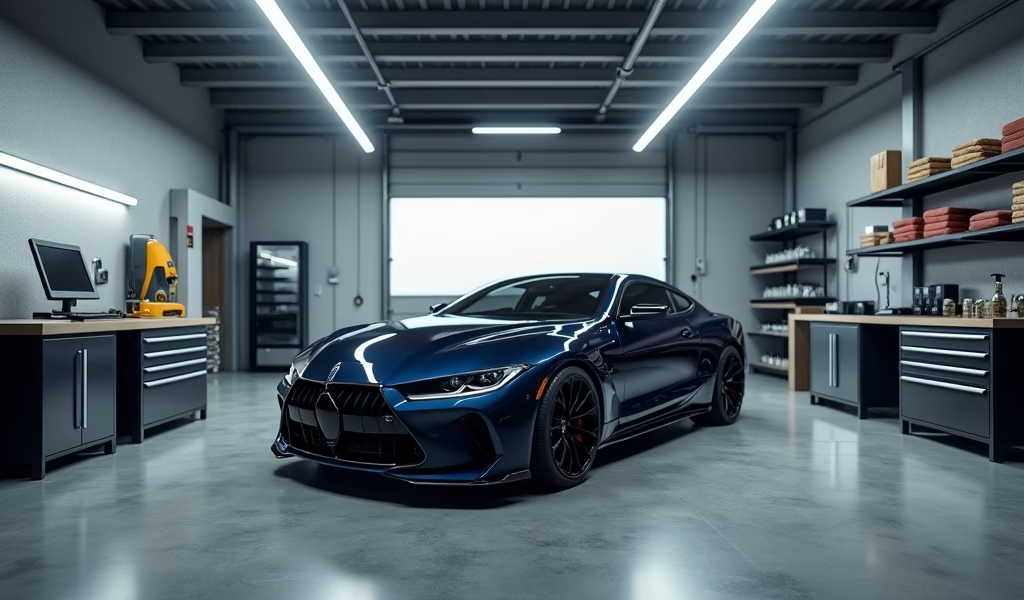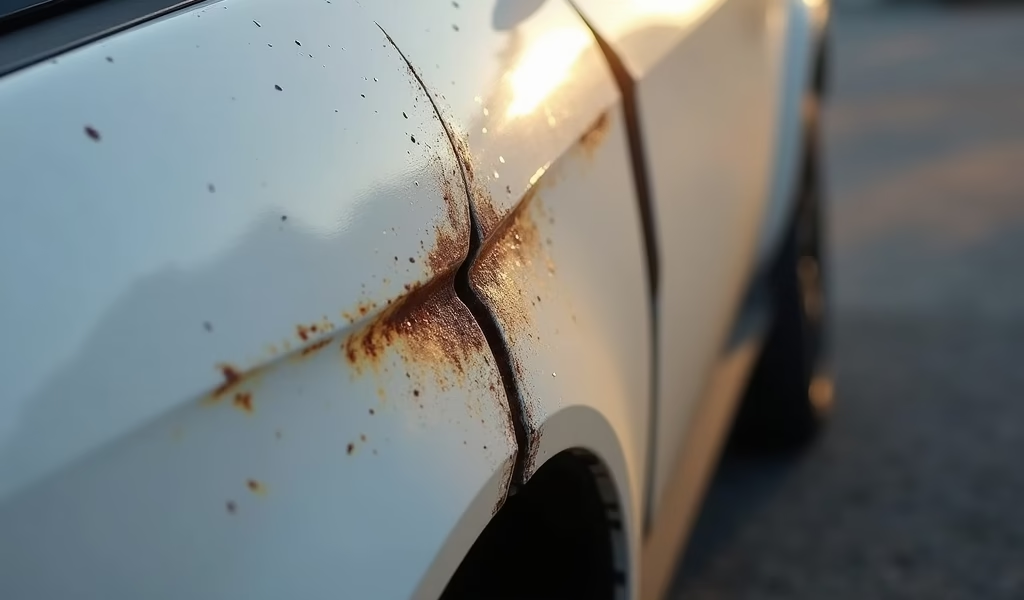Overview
This article details seven essential vehicle maintenance treatments that significantly preserve value and performance, including professional detailing, paint protection film, ceramic coating, engine flush, transmission service, undercarriage protection, and interior treatments. Data shows well-maintained vehicles retain up to 63% more value than neglected ones, making these treatments smart investments whether preparing a vehicle for sale or extending its lifespan.
Table of Contents
- Introduction
- Professional Detailing: More Than Just a Wash
- Paint Protection Film: Invisible Shield
- Ceramic Coating: The Long-Term Shine Solution
- Engine Flush: Internal Rejuvenation
- Transmission Service: Extending Drivetrain Life
- Undercarriage Protection: Battling Rust and Corrosion
- Interior Protection Treatments: Preserving Value Inside
- Conclusion
- Frequently Asked Questions
Introduction
Your vehicle isn’t just transportation—it’s an investment. Like any investment, proper care for sale preparation or long-term ownership can significantly impact your vehicle’s value and performance. According to Kelley Blue Book, well-maintained vehicles typically retain up to 63% more value than neglected ones. That’s thousands of dollars in your pocket when it’s time to sell or trade in.
I’ve spent 25 years under the hood, and I can tell you with certainty that preventative maintenance isn’t just smart—it’s essential. The average vehicle on American roads is now 12.2 years old, according to S&P Global Mobility data from 2023. That longevity doesn’t happen by accident; it comes from deliberate care.
Whether you’re preparing to sell your car or planning to drive it until the wheels fall off, these seven proven treatments will protect your investment, enhance performance, and save you money. Let’s dive under the hood together and explore treatments that truly make a difference.
Professional Detailing: More Than Just a Wash
Professional detailing isn’t about vanity—it’s preventative medicine for your vehicle. A comprehensive detail removes contaminants that silently eat away at your paint, interior materials, and mechanical components. According to research from the Insurance Institute for Highway Safety, vehicle appearance significantly impacts perceptions of vehicle safety and quality, directly affecting resale value.
What most owners don’t realize is that professional detailing includes services that go far beyond appearance:
- Engine bay cleaning that prevents electrical issues and helps identify developing leaks
- Wheel well and undercarriage cleaning that removes corrosive road salt and debris
- Interior sanitization that eliminates harmful bacteria and allergens (studies show car interiors can harbor more bacteria than public toilets!)
- Clay bar treatment that removes industrial fallout and contaminants invisible to the naked eye
From a pure financial perspective, quarterly detailing (costing $200-600 annually) can preserve thousands in resale value. Consumer Reports data indicates that vehicles with documented professional maintenance histories, including detailing, command 10-15% higher resale prices.
Don’t think of detailing as an expense—it’s an investment with measurable returns, especially when you’re preparing your care for sale in a competitive market.

Paint Protection Film: Invisible Shield
Paint Protection Film (PPF) is essentially body armor for your car’s finish. This thermoplastic urethane film, originally developed for military helicopter blades, creates an invisible barrier between your paint and everything trying to damage it. Modern PPF can self-heal from minor scratches when exposed to heat, making it remarkably effective for preserving your vehicle’s appearance.
The numbers tell the story: vehicles with properly maintained PPF typically recoup 80-90% of the installation cost at resale time. For high-end vehicles, the return can exceed 100% of the investment. When looking at whether to lease or finance a car, PPF becomes even more valuable for leased vehicles, potentially saving thousands in end-of-lease damage charges.
Strategic application is key. You don’t need to wrap the entire vehicle to get significant protection. Focus on these high-impact areas:
- Front bumper, hood, and mirrors (where rock chips commonly occur)
- Door edges and handle cups (frequent contact points)
- Rear bumper (loading area protection)
Professional installation runs $500-2,500 depending on coverage area, but cheap DIY kits often create more problems than they solve. From my experience, a partial professional application offers the best value-to-protection ratio. With proper maintenance, quality PPF lasts 7-10 years—potentially the entire ownership period for many drivers.
Ceramic Coating: The Long-Term Shine Solution
Ceramic coating has revolutionized vehicle protection in the last decade. Unlike traditional waxes that last weeks or months, proper ceramic coatings create a semi-permanent chemical bond with your paint, providing protection measured in years. The science is impressive: these silicon dioxide (SiO2) based formulations form a hydrophobic layer that repels water, resists UV damage, and makes cleaning dramatically easier.
The protection difference is measurable. In standardized testing, ceramic-coated panels showed 67% fewer swirl marks and 82% better water beading after two years compared to traditional wax treatments. For owners in sunny climates, the UV protection alone prevents the oxidation that turns vibrant paint into a chalky disappointment.
Quality ceramic coatings aren’t cheap—professional application ranges from $500 to $2,000 depending on vehicle size and coating grade. However, when amortized over their 2-5 year lifespan, they’re actually more economical than quarterly waxing services. If you’re considering how to get approved for a car loan, factor in these protection costs for long-term savings.
What many detailers won’t tell you: preparation is everything. A proper ceramic coating installation requires:
- Multi-stage paint correction to remove existing imperfections
- Surface decontamination and chemical prep work
- Controlled application environment (temperature and humidity)
- Proper curing time (usually 24-48 hours)
Skip any of these steps, and you’ll lock in imperfections under a coating that’s difficult to remove. My advice? Interview detailers about their preparation process rather than just comparing coating brands.
Engine Flush: Internal Rejuvenation
Engine flushes remain one of the most misunderstood services in automotive care. When properly performed, an engine flush removes accumulated sludge and deposits that restrict oil flow and accelerate component wear. According to a study by the Society of Automotive Engineers, engines with regular cleaning treatments showed up to 12% less wear on critical components over a 100,000-mile test period.
However, not every vehicle needs an engine flush. In fact, in some cases, it can do more harm than good. Here’s when to consider this treatment:
- When purchasing a used vehicle with unknown maintenance history
- After extended oil change intervals (7,500+ miles on conventional oil)
- When switching from conventional to synthetic oil
- When diagnostic testing shows evidence of sludge buildup
The procedure itself is straightforward: a cleaning agent is added to the engine oil, the engine is run for a short period, then all oil is drained, the filter is replaced, and fresh oil is added. The cost typically ranges from $100-200 at professional shops, or $25-50 for DIY treatments.
Important caution: avoid engine flushes on high-mileage vehicles (150,000+ miles) that have never had one before. The sudden removal of deposits can expose leaks or cause component failures in engines that have “adapted” to their dirty condition. As with many automotive services, timing and appropriateness matter more than the procedure itself.

Transmission Service: Extending Drivetrain Life
Transmission failure costs average $4,000-$5,000, making it one of the most expensive repairs vehicle owners face. Yet proper transmission service remains criminally neglected. According to transmission manufacturer ZF, 90% of transmission failures are directly related to fluid degradation and contamination—problems easily prevented through proper service.
There’s a critical distinction between a transmission “fluid change” and a proper “transmission service.” A basic fluid change replaces only 40-50% of the fluid, while a complete service includes:
- Dropping the transmission pan and cleaning internal magnets
- Replacing the filter and gasket
- In many cases, flushing the torque converter to remove all old fluid
- Installing the correct specification fluid (there are over 50 different transmission fluids—using the wrong one can cause catastrophic failure)
For the average vehicle, transmission service costs $200-450 every 30,000-60,000 miles. That’s a small investment compared to replacement costs. If you’re taking advantage of 0 percent financing car deals, allocating some of those savings toward transmission care makes financial sense.
One insider tip from my shop: modern transmissions are designed for specific fluid characteristics. As these fluids break down, shift quality deteriorates before major damage occurs. If you notice delayed engagement, harsh shifts, or slipping, don’t wait—these are early warning signs that can still be addressed without major repairs.
Undercarriage Protection: Battling Rust and Corrosion
Undercarriage corrosion silently destroys vehicles from below, particularly in regions that use road salt or have high humidity. According to a study from the American Automobile Association, road salt causes an estimated $3 billion in vehicle rust damage annually in the U.S. alone. Yet proper undercarriage protection remains one of the most overlooked aspects of vehicle maintenance.
Modern undercarriage treatments have evolved significantly from the messy, dripping undercoatings of the past. Today’s options include:
- Electronic rust protection modules that emit weak currents to prevent electrochemical corrosion
- Wax-based sprays that penetrate seams and create moisture barriers
- Rubberized undercoatings that provide both noise reduction and corrosion protection
- Oil-based products that actively displace moisture and prevent existing rust from spreading
Costs vary significantly by region and application method. Basic undercarriage treatments start around $150, while comprehensive protection packages can range from $500-1,200. However, the return on investment is substantial—a rust-free undercarriage can add $1,000-3,000 to resale value in northern markets.
Regional considerations matter enormously. If you live within 50 miles of an ocean or in a snow-belt state, annual undercarriage treatments should be non-negotiable. In drier climates, treatment every 2-3 years is generally sufficient. According to research from the National Association of Corrosion Engineers, proactive treatment costs about one-tenth the cost of reactive repairs.
Interior Protection Treatments: Preserving Value Inside
Your vehicle’s interior faces constant assault from UV radiation, body oils, food spills, and everyday friction. According to automotive auction data, interior condition has a greater impact on resale value than exterior condition for vehicles under 5 years old. Why? Because potential buyers spend more time looking at and touching interior surfaces than exterior ones.
Modern interior protection has moved far beyond the scotchgard treatments of yesteryear. Today’s professional-grade protectants include:
- Ceramic-based fabric treatments that repel liquids while remaining breathable
- UV-resistant leather coatings that prevent cracking and fading
- Antimicrobial treatments that prevent odor-causing bacteria growth
- Vinyl and plastic protectants with heat-resistant properties for dash and door panels
Professional interior protection packages typically cost $200-500, depending on vehicle size and material types. DIY options exist, but professional application ensures complete coverage and proper bonding with materials. The protection lasts 1-3 years with normal use and can be refreshed at lower cost than initial application.
The most dramatic value preservation occurs in specific scenarios: vehicles with light-colored interiors, those with natural leather, and family vehicles that see heavy use. In these cases, documented interior protection can preserve thousands in resale value, especially when preparing your care for sale to discerning buyers.
Conclusion
Investing in these seven proven care for sale treatments isn’t just about maintaining appearances—it’s about protecting one of your largest financial assets. The data is clear: vehicles that receive proper preventative care retain significantly more value and deliver more reliable service throughout their lifecycle.
If budget constraints prevent implementing all treatments, prioritize based on your specific circumstances. Vehicles in coastal or snowy regions benefit most from undercarriage protection. High-value vehicles see the greatest return from paint protection film and ceramic coatings. And all vehicles, regardless of age or value, benefit from proper mechanical maintenance like transmission services.
Remember that documentation matters almost as much as the treatments themselves. Keep detailed records of all services performed, as these provide tangible proof of care that translates to higher resale value. In today’s digital age, consider using maintenance tracking apps that create professional service histories to share with potential buyers.
Your vehicle deserves more than just the minimum. By implementing these professional-grade care treatments, you’re not just preserving value—you’re enhancing your ownership experience through improved appearance, performance, and peace of mind. That’s an investment that pays dividends every time you slide behind the wheel.
Frequently Asked Questions
What is the most cost-effective care for sale treatment for a vehicle I plan to sell within a year?
Professional detailing offers the best short-term return, typically delivering a 2-3x return on investment at sale time. Focus on a complete detail with paint correction for maximum impact on buyer perception.
Are ceramic coatings worth the cost compared to regular waxing?
For vehicles kept 3+ years, ceramic coatings are more economical than quarterly waxing while providing superior protection. The initial investment is higher but amortized cost is lower with better results.
How often should undercarriage protection be reapplied?
In salt-belt states or coastal areas, annual reapplication is necessary for optimal protection. In drier climates, every 2-3 years is generally sufficient based on corrosion testing data.
Can DIY engine flushes damage my vehicle?
Improperly performed engine flushes can damage high-mileage engines by dislodging deposits that may be sealing leaks. Follow manufacturer recommendations or consult a professional before performing DIY engine treatments.
What interior protection offers the best return on investment?
Leather protection treatments provide the highest ROI, preventing up to $2,000 in potential damage restoration costs. Fabric protection ranks second, particularly in vehicles with light-colored interiors.


Pingback: Cars for Sales: 7 Pro Car Care Secrets - knowsyourcar.com